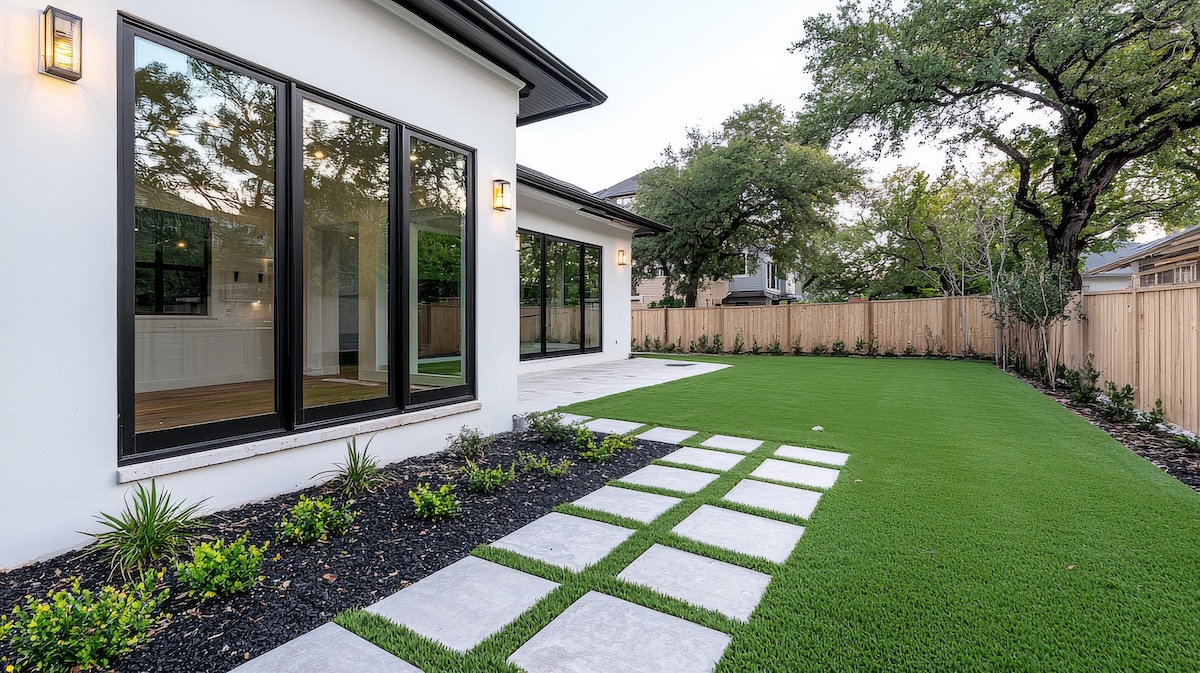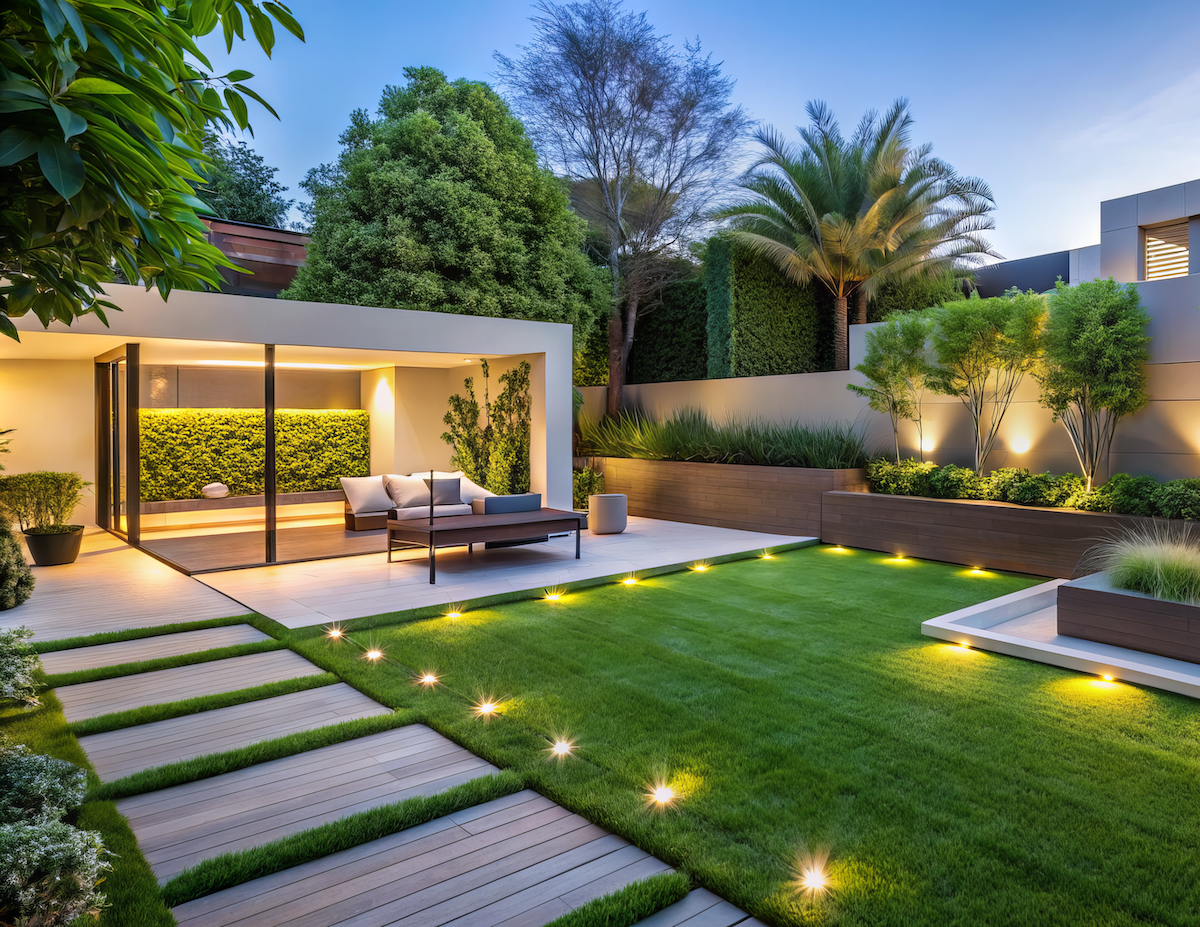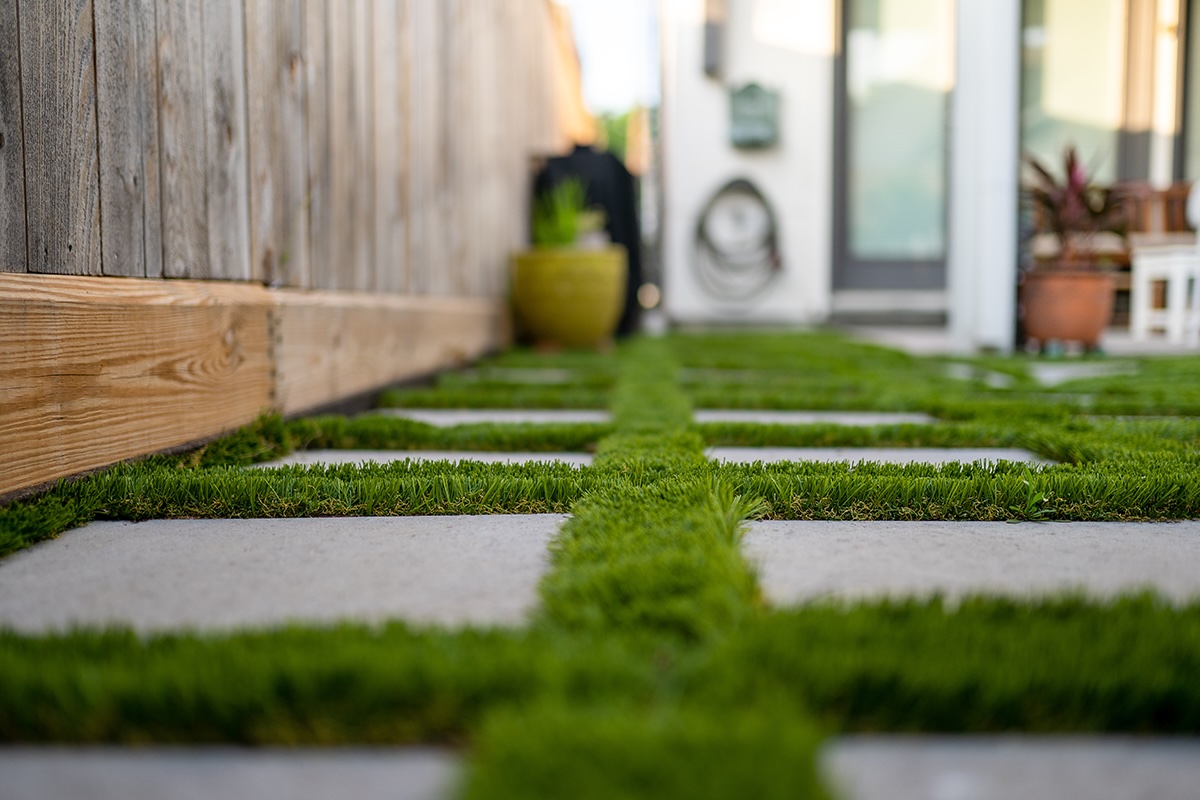Last Updated on June 18, 2025 by ReTurf
Artificial turf between pavers has become a popular design element in modern landscaping. It adds color, contrast, and softness to hardscapes, especially in patios, walkways, pool decks, and outdoor entertainment areas. However, one of the most common questions before installation is how much turf you’ll need. Calculating artificial turf requirements for paver installations is not the same as calculating for full turf lawns. It depends on the number, size, and layout of the pavers, as well as the width of the turf strips in between.
This article breaks down how to determine the correct amount of turf you’ll need between pavers, including key measurement tips, layout considerations, and waste factors to expect.
Key Variables That Determine Turf Quantity
Before you can calculate turf coverage, you need to know the following:
- Number of gaps: How many turf lines will exist between the pavers
- Total length of turf strips: The combined linear feet of all the turf gaps
- Strip width: The width of each turf strip between pavers, usually ranging from 0.5 to 2 inches but sometimes wider
- Turf roll width: Most artificial turf comes in 12-foot or 15-foot-wide rolls
- Pattern layout: Whether the pavers are in a linear grid, offset, irregular pattern, or checkerboard
Each of these factors affects both how much turf you’ll use and how much waste you’ll generate during installation.

How to Measure for Turf Between Pavers
Step 1: Measure the Turf Gaps
Start by measuring all the gaps where turf will go:
- Measure lengthwise between each row of pavers
- Measure crosswise between each column of pavers
- Add up all linear feet of turf strips
For example, if you have a 10 ft by 10 ft patio with pavers spaced 2 inches apart and arranged in a grid with 5 rows and 5 columns, that’s:
- 4 turf gaps between the 5 rows (running 10 feet each) = 40 linear feet
- 4 turf gaps between the 5 columns (also 10 feet each) = another 40 linear feet
- Total = 80 linear feet
Step 2: Multiply by the Strip Width
Once you have the total linear feet, multiply by the strip width to convert to square footage.
For example:
- 80 linear feet × 2 inches wide = 160 inches²
- Convert square inches to square feet:
160 in² ÷ 144 = 1.11 ft²
If the gaps are wider, say 4 inches, that same setup would need 2.22 ft².
Step 3: Account for Waste
Even though the required turf surface area seems small, waste during cutting and trimming is significant due to the shape and spacing of the pavers. You’ll rarely get perfect alignment without leftover material. It’s common to have 15 to 25 percent waste.
For the 2.22 ft² estimate above, you’d want to purchase about 2.5 to 3 ft² total to be safe.
Because turf is sold in large rolls (typically 12 ft × 100 ft or 15 ft × 100 ft), you likely won’t be buying just a few square feet. For small-scale projects, look for remnant pieces sold by the square foot or custom cuts from vendors.
Example Calculation
Let’s say you’re installing 24” × 24” concrete pavers spaced 2” apart in a 12 ft × 12 ft grid pattern. That gives you:
- 6 pavers per row (5 gaps per row)
- 6 rows of pavers (5 gaps between)
- 5 gaps × 12 ft = 60 linear ft (horizontal)
- 5 gaps × 12 ft = 60 linear ft (vertical)
- Total = 120 linear ft
Each strip is 2 inches wide:
- 120 linear ft × 2 in = 240 in² = 1.67 ft²
- Add 20% waste = ~2 ft² needed
Again, while the actual area is small, this material will be cut into many narrow strips. You can’t just buy 2 square feet of turf from a full roll, so you’ll need to purchase a remnant or get a custom order.

Helpful Tips for a Clean Result
- Use a sharp utility knife to cut turf cleanly into strips
- Buy pre-cut turf strips from vendors who offer options made for paver spacing
- Choose straight grid patterns over irregular layouts to simplify measuring and trimming
- Plan your turf cuts so they align with the turf’s grain direction (some turf types have a visible lean)
- Lay turf before pavers if possible in new installations, then cut gaps as needed for a better fit
By taking precise measurements, rounding up slightly for waste, and preparing your tools ahead of time, you can get excellent results using artificial turf between pavers. With a little planning, this small detail can make a big visual impact on any outdoor space.



